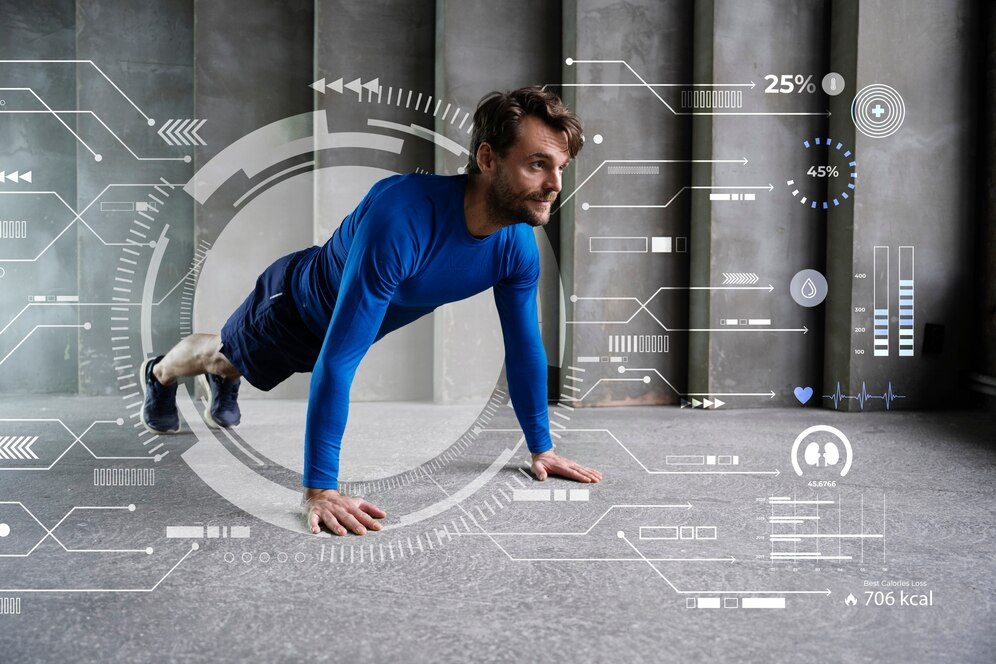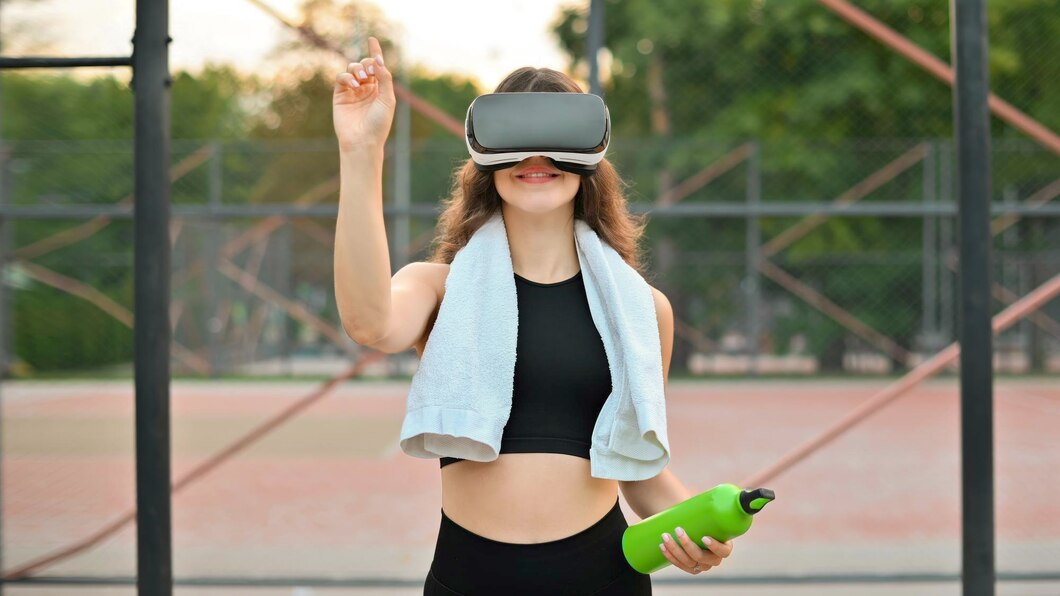Ai-Driven Virtual Coaches: Revolutionizing Athlete Training and Development
Virtual trainers created by AI are now redefining athletic training, putting into question the limits of adaptation in sports. These learning tools assist in developing unique plans, monitoring performance, and even risk of injuries. Serena Williams and other stars have trained themselves using data-driven strategies that many people cannot afford today. The sports training market is estimated to reach $19 billion by 2027, with AI as a key driver of that growth. There is no better way to look at how these virtual coaches are revolutionizing athlete development than to dive into more detail.
Personalized Training Plans
AI virtual trainers create personal training regimens unique to each player’s needs. They use data from wearable devices, videos, and prior performances to develop a regime focusing on both positives and negatives. For those who enjoy combining technology with convenience, the Melbet app offers an easy way to track progress and access additional tools. For instance, an ordinary jogger applying AI-based technologies may adjust the gait pattern due to the signals coming from motion detectors.
These are developmental plans and, therefore, adjust to the ever-changing circumstances of the athlete. If your stamina rises, other chinks in your armor improve, the plan changes to reflect that fact. These characteristics guarantee continuing growth and, at the same time, protect against exhaustion. AI provides the ultimate method to optimize performance for working professional and recreational athletes.
Real-Time Feedback and Adjustments
Virtual coaches can provide timely and practical feedback during the training process. This means that athletes can correct mistakes as they occur without waiting until they are done training to analyze them. Key benefits of real-time AI coaching:
- Instant error detection: Tennis players can receive accurate time information on the angle through which they swung the racket.
- Improved form and posture: Such software like Kemtai helps athletes improve their movement techniques.
- Customized progression: It changes with the development of the athletes’ skills.
These capabilities increase training effectiveness and enable users to practice further without interruptions. Direct guidance is time-saving, and AI-driven systems provide faster solutions to problems. Fans who wish to receive more information and study these technologies can follow Instagram MelBet. Here, they can find information, advice, and articles about further developing training tools and technologies.
Injury Prevention and Recovery
An AI-driven virtual coach addresses this issue directly, relying on data analysis to reduce risks and maximize recovery. Unlike many technologies that focus on reacting to incidents and preventing them from escalating, these are proactive. For example, some time ago, Kitman Labs was designed for professional teams. It allowed for tracking players’ health conditions and identifying the early signs of overtraining.
This innovative approach means athletes don’t have to guess when they are at their limit or have trained too hard. Recovery is just as important, and her AI excels at it. Rehabilitation progress helps virtual coaches guide athletes back to their optimal condition step by step.
Predictive Analytics for Injury Prevention
Virtual coaches flag movement sequences that pose the most significant risk when comparing each frame of a runner’s gait or a basketball player’s jump. They record factors such as the angles of particular joints, the athletes’ loads, and stresses on the muscles to identify vulnerable areas.
For example, the NFL introduced the Zebra MotionWorks system, which tracks players’ movements during games and training sessions. This system drastically reduces injuries. It shows when an athlete is tired or pushed to the limit and can quickly help coaches make informed decisions about adjusting this value.
This tech is not just for professional players. AI solutions for recreational players are cheap and assist them in avoiding injuries and their attendant expenses. This is all about risk prevention at the essential stage of its occurrence.
Recovery Optimization
Chasing a ball and getting back into the field requires specific instructions, which can be difficult to obtain after a nasty injury. However, with the help of an AI virtual coach, the recovery process is safe and efficient because each step depends on the particular athlete. Key AI-based recovery tools include:
- Wearable sensors: Tools such as Fitbit help to follow up on recovery by measuring movements and pulse.
- Rehabilitation apps: To illustrate, Kaia Health suggests the movements you should perform depending on the outcomes you have attained in real-time.
- Pain management systems: Intelligent gadgets can adapt therapies such as TENS units and make them work more quickly.
These tools offer continuity, which is critical for a quicker and more accurate recovery. Athletes can record how they heal and get back to their best performance without hurting themselves.
Skill Development and Technique Analysis
Automated virtual coaches are the new way that athletes are set to develop themselves. These systems inform how a player performs the shot and enable him to improve his technique instantly. Since the actions are split up into more minor tendencies, an individual can learn exactly what aspect of their movement needs correcting.
Here’s a small comparison of traditional coaching versus AI-driven analysis:
| Aspect | Traditional Coaching | AI-Driven Virtual Coaching |
|---|---|---|
| Feedback Timing | Post-training | Real-time |
| Data Precision | Subjective | Highly detailed |
| Adaptability | Fixed routines | Personalized adjustments |
| Accessibility | Limited to physical presence | Available anytime, anywhere |
AI enables athletes to perform better, not only more frequently but also with comprehensible analysis and recommendations. These tools are particularly valuable for people who aim to progress further without regular live sessions with a coach.
Enhancing Mental Resilience
The inability to take hits is not news. What is extraordinary is the spirit to fight and win despite those hits. These coaches use mental training in their programs to help players focus, feel confident, and handle stress.
For instance, FocusCalm monitors brain activity during training and lets athletes rehearse meditation. These systems are designed to recognize stress patterns and recommend exercises to cope with stress. This is especially important for sports betting because mental performance is involved in analyzing matches.
AI also uses games to train mental stamina for tasks, making the process enjoyable and productive. In sports, individuals keep their emotions in check during crucial situations, which applies to in-game tournaments.
Cost-Effective Solutions for Athletes
In the past, affordable professional coaching has been expensive, excluding average people from superior training. AI-driven virtual coaches alter this script. They exist as cheaper services that offer equal results as the most experienced and skilled professionals.
Such apps as HomeCourt or MyFitnessPal are available to users at a significantly lower price than paid coaching services. These tools allow athletes to choose advice that suits their level of play, from recreational players to professional ones. This would come without having to spend a lot of money.
AI coaching has brought equity in sports development compared to other forms of training. A high school athlete in a small town now has as much information to work with as an Olympic athlete. Where geography and cost were once factors, AI ensures everyone has an equal chance of being the best.
Future of AI in Sports
Implementing AI in sports is not a novelty—it is the future. As technology improves, virtual coaches will become more interactive and combine physical, mental, and strategic training into one system. The focus may shift to integrating AI into team aspects and esports, which could change how games are played and understood. Many promising ideas exist, and they will undoubtedly influence the new generation of athletes.


